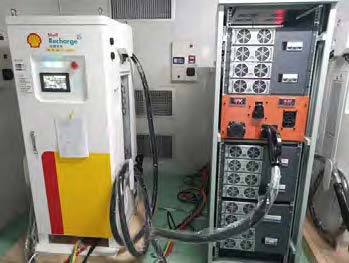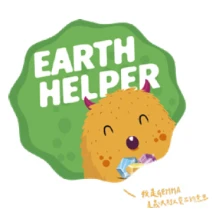Environment
Phihong deeply recognizes the importance of Earth's resources and sustainable development. The company actively promotes environmental management systems and aligns with global carbon reduction trends. Using 2021 as the baseline year, Phihong aims to achieve a 42% reduction in carbon emissions (Scope 1+2) by 2030, working toward net-zero emissions by 2050.
Transformation to Circular Economy
The full name of PCR is POST-CONSUMER RESIN, which means “reusable material after certain process”, also known as renewed material (recycled material). Currently, all of
PHIHONG’s existing plastic materials are made from recycled materials. If we use PCR plastic (comply with the specification, and have a certain percentage in plastic), in addition to the price increase, its reliability and impact resistance will also be lower than the existing materials. After all, in the PCR materials are mostly composite materials. In the future, PCR will be widely used and PHIHONG will continue to follow up with green technology as our mission.
| kg CO2 eq. for 1kg resin material | |
| PCR 30% | Reduce 0.5~1 kg |
| PCR 50% | Reduce 1.25~1.7 kg |
| PCR 70% | Reduce 2~2.3 kg |
| PCR 90% | Reduce 2.5~3kg |
Phihong enhances product competitiveness and reduces environmental impact by adopting reusable packaging materials and energy recycling equipment. To improve packaging efficiency, Phihong replaced single-use wooden crates with reusable snap-lock wooden crates, which are easy to assemble, disassemble, and can be reused 3–5 times, significantly reducing resource waste and conserving forests.
In addition, Phihong addresses high energy consumption during aging tests by introducing energy recovery cabinets, which recycle energy back into the power grid. This innovation reduces electricity costs and energy waste, achieving an impressive 87% recovery rate. For instance, a 120kW charging pile recovers 105 kWh of energy, with only 15.3kW drawn from the grid.

| Action plan | DC charging pile wooden box packing material | DC test power recovery |
| Traditional practice | Single use | No recycling |
| Circular Economy practice | Revised packaging standards. Replace iron nails with screws in wooden crates and introduce a snap-lock design to enhance packaging protection. This allows for recyclable use for 3 or more times. | Recovered test power is fed back into the grid for reuse, significantly reducing energy wastage. Each charging pile can save approximately 87% of electricity consumption. |
| Specific benefits in 2023 | Reduce 6,000 sets of wooden boxes | Recover 315,000 kWH of electricity |
The use of renewable energy and the pursuit of environmental sustainability is an unstoppable global trend. Governments will actively invest in green energy. In 2021, Phihong was successfully selected by TCC’s green supply chain and joint TCC Storage to launch a new generation charging station. We became the first “EV charging point power supplier” in Taiwan to join NHΩA.TCC’s “EARTH HELPER” sustainable tandem program. By joining this program and through the concept of working with companies and the environment, we will provide a more convenient pure electricity life for Eastern Taiwan and create a sustainable environment.

In the TCC’s (NHΩA.TCC)“EARTH HELPER”sustainable tandem program, the concept is to call on all electric vehicle owners in Taiwan to convert their daily charging into carbon reduction actions. The carbon reduction of every charge is equivalent to the amount of carbon absorbed by planting trees for the earth every year. This achieves the purpose of charity and revitalizing the local environment. Through the joint promotion of both TCC and Phihong, the carbon-emission reduction charging of EV owners, and encourage owners to participate in the EARTH HELPER low-carbon and energy-saving action, a powerful carbon reduction community is formed.
In the future, we will continue to work with our strategic partner NHΩA.TCC’s “10-Year Plan” to strengthen the technological capabilities of Taiwan’s energy storage chain. At the same time, we will eye on the international market to pursue the next wave of charging facility business opportunities in the global market. We will achieve the goal of selling 15,000 EV charging points in Europe and the United States by 2025 and increasing it to 90,000 by 2030.


Hualian DAKA charging station is operated by NHΩA.TCC. There are two DC EV charging point provided by Phihong.